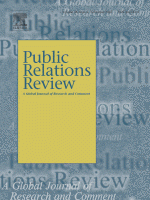Lindsey Anderson

Education
Ph.D., , Purdue University
Research Expertise
Communication Education
Organizational Communication
Dr. Lindsey Anderson is an organizational communication scholar who investigates aging and other, related communication processes using qualitative methods. Her primary area of research addresses the way age/aging is portrayed by organizations as well as the intergenerational interactions that take place in the workplace. Drawing on her role as the Executive Director of the Oral Communication Program, Lindsey also explores questions about the role of communication in the teaching/learning process. Her research has appeared in multiple outlets including Communication Teacher, The Annals of the International Communication Association, Public Relations Review, Management Communication Quarterly, Communication Studies, and Public Relations Inquiry.
Publications
The importance, significance, and relevance of communication: a fourth study of the criticality of the discipline’s content and pedagogy
The results of this study argue that communication, and specifically oral communication education, is critical to students’ future personal and professional success.
Contributor(s): Lindsey AndersonNon-ARHU Contributor(s): Sherwyn P. Morreale, Melissa A. Broeckelman-Post, Victoria A. Ledford & Joshua N Westwick

Similar to three earlier studies, thematic analysis of 2,155 articles, identified in academic and popular press publications extending from 2016 to 2020, provides support for the centrality of the communication discipline’s content and pedagogy. These results reinforce the importance of communication to promoting health communication; growing individually and in relation to others; enriching the educational enterprise; enhancing organizational processes; being a responsible community member locally, nationally, internationally, and globally; and addressing crises, safety, risk, security, and science communication. Subthemes are identified in each of these six thematic categories, and the results are compared with those of the three earlier iterations of this study and in light of major shifts in the sociopolitical and cultural environment in the U.S. and the globe since the last iteration.
“A symbol of service and sacrifice, mourning and memory”: Public relations and public memory the 100th year commemoration of the tomb of the unknown soldier
To date, limited research has explored the concept of public memory in public relations research, although public relations practitioners play an essential role in the agenda-setting that shapes understanding of an event.
Author/Lead: Victoria McDermottContributor(s): Lindsey Anderson
Public memory is the conceptual process through which understandings about a historic event are defined, informed, and reshaped. This concept is important for public relations practitioners as public memory provides substance for the communicative process providing the space to establish shared meanings for members of a given public. One example of the role of public relations practitioners in crafting public memory was the 100th anniversary celebration of the Tomb of the Unknown Soldier (TUS), termed #TUS100 in November 2021. In order to understand what and how memory was communicated through the #TUS100 event, we completed an interpretive thematic analysis of the materials created and distributed by the Arlington National Cemetery Office of Public Affairs related to the 100th year Tomb Commemoration and video clips from three popular national news outlets (ABC, CBS, NBC). In doing so we found that public memory is an evolving narrative that has the potential to create/reaffirm relationships—both of which have implications for public relations scholarship and practice.
Facing Adversity Together: Toward a Genre of Organization- Stakeholder Resilience Discourse
A genre analysis of the messages created by Big 10 Universities to welcome stakeholders to the 2020–2021 academic year.
Author/Lead: Lindsey AndersonNon-ARHU Contributor(s): Ashley Jones-Bodie
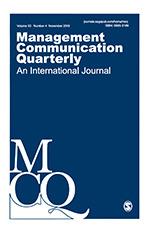
Organizations, such as universities, face a variety of adversities, challenges, or disruptions that call for resilience to be enacted. Resilience is an important communicative process that relies on organizations and their stakeholders to collaboratively make sense of and respond to a given adversity, such as the COVID-19 pandemic. In order to identify the shared characteristics that organizations use in their communication surrounding adversity, we completed a genre analysis of the messages created by Big 10 Universities to welcome stakeholders to the 2020–2021 academic year. Through our analysis we uncovered commonalities that make organization-stakeholder resilience discourse distinct—(1) defining a shared relationship, (2) detailing steps to regain a sense of normalcy, and (3) describing the outcome of enacting resilience. Based on these findings, we propose a genre of organization-stakeholder resilience by highlighting the role of communication in cultivating resilience through the emphasis on discursive relationships that exist between organizations and stakeholders.
Communication apprehension in the online presentational speaking course: Considerations for synchronous course meetings and asynchronous presentations
Study analyzes qualitative responses (N = 178) to an open-ended survey distributed to undergraduates in presentational speaking courses.
Author/Lead: Victoria LedfordContributor(s): Lindsey Anderson, John Leach, Melissa Lucas, Raphael Mazzone
Non-ARHU Contributor(s): Xiaojing Wang
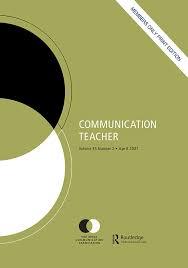
As institutions of higher education continue to offer online instruction, educators and administrators of presentational speaking courses must adapt their classes for various modes of online delivery. One primary consideration for adapting a presentational speaking course to online delivery is how students will experience communication apprehension and/or public speaking anxiety in online communication contexts. The instructional communication field is rife with research about students’ experiences with speech anxiety and communication apprehension. However, little work has explored how students’ experiences may differ when the primary mode of course communication and course presentations is mediated through either synchronous or asynchronous modes of online communication. If these anxieties in face-to-face settings can deter students’ academic and professional goals (Richmond et al., Communication apprehension, avoidance, and effectiveness [6th ed., Pearson, 2013]), researchers should investigate students’ experiences in online courses. The current study begins to fill this gap. We analyze qualitative responses (N = 178) to an open-ended survey distributed to undergraduates in presentational speaking courses. Thematic analysis revealed the uniqueness of online communication apprehension and its similarities to face-to-face communication apprehension. Implications for administrators and instructors of presentational speaking courses are offered.
“Old age scares me”: Exploring Young Adults' Feelings About Aging Before and During COVID-19
Communication and social contexts shapes young adults feelings about aging.
Author/Lead: Lindsey AndersonNon-ARHU Contributor(s): Patricia E. Gettings
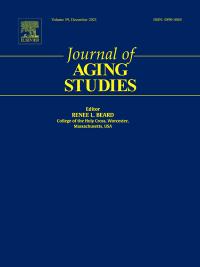
Negative messages about aging dominate public discourse about the COVID-19 pandemic as older adults have been classified as members of a “vulnerable” population due to their chronological age. To explore young adults' feelings about aging before and after the emergence of COVID-19, we collected 794 qualitative questionnaires during the fall of 2017 and another 463 responses during the fall of 2020. We drew on the concepts of age-based stereotypes and future selves to guide our thematic analysis of the data. Findings captured young adults' feelings about aging at two distinct points in time and demonstrate the complex ways that communication contributed to shifting feelings about aging. In doing so, we highlight the role that portrayals of aging play in shaping young adults' feelings about aging and their perception of their future selves. These findings offer conceptual contributions about communication, context, and aging.
Navigating Ethical Quandaries with Close Personal Contacts in Qualitative Research
Study takes an autoethnographic approach to research that involves close personal contacts.
Author/Lead: Jeannette IannaconeContributor(s): Lindsey Anderson
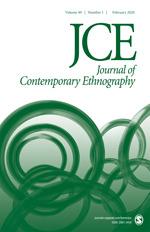
There are a variety of ethical situations that qualitative communication researchers must navigate. This point is especially true when the research involves close personal contacts, such as friends and family members. In order to problematize the ethical frameworks that guide qualitative inquiry and illuminate the complexities of relational ethics, we—the authors—reflected on our past experiences engaging in research with close personal contacts. Specifically, we took a collaborative autoethnographic approach that involved sharing personal stories, drafting autoethnographic narratives, and engaging in individual and collaborative sensemaking. In doing so, we highlight the following three quandaries specific to conducting research with close personal contacts: (1) challenging/affirming identity anchors, (2) challenging/affirming power relations, and (3) challenging/affirming ownership. We explicate each of these themes using autoethnographic vignettes and conclude by offering five lessons learned of relational ethics, which are organized using the phases of qualitative research: conceptualization and design, data collection, and representation.
Read More about Navigating Ethical Quandaries with Close Personal Contacts in Qualitative Research
Expanding and constraining critical communication pedagogy in the introductory communication course: A critique of assessment rubrics
Study presents an interpretive analysis of the presentational speaking rubrics used in the introductory communication course at 20 institutions in the United States.
Author/Lead: Drew Ashby-KingContributor(s): Jeannette Iannacone, Victoria Ledford, Alyson Farzad-Phillips, Matthew Salzano, Lindsey Anderson

Rubrics are a commonly used tool to evaluate student work in the introductory communication course. Although rubrics may appear objective, they are continually interpreted by both instructors and students, often reflecting traditional classroom power dynamics. In order to understand how rubrics constrain as well as expand opportunities for the enactment of critical communication pedagogy, we conducted an interpretive analysis of the presentational speaking rubrics used in the introductory communication course at 20 institutions in the United States. In doing so, we identified three levels of rubric context: high, low, and shared. These contexts inform important theoretical and pedagogical implications for the introductory course, as they highlight existing power dynamics, instructor grading practices, and student agency.
Serving public interests and enacting organizational values: An examination of public interest relations through AARP’s Tele-Town Halls
This study illuminates how AARP’s communication reflected public interest relations.
Author/Lead: Lindsey Anderson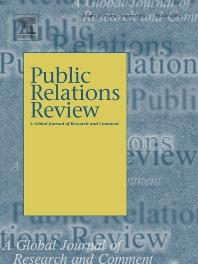
Public interest relations (PIR) is an approach to public relations scholarship and practice that contributes to the social good by integrating the concept of public interest into organizational goals and values. The need for PIR was emphasized during the COVID-19 pandemic as publics looked to organizations for information about a variety of topics (e.g., symptoms, vaccines). AARP created a series of tele-town halls to communicate with its publics, who are considered to be members of a “vulnerable population” during the pandemic. In order to understand how AARP’s Coronavirus Tele-Town Halls reflected the practices of PIR, I completed a critical thematic analysis of 28 virtual sessions that were hosted in 2020–2021. The analysis, which was guided by the tenets of PIR, found that AARP’s communication (1) highlighted common life course milestones of its publics, (2) emphasized the quality of the information, and (3) provided avenues to engage with the organization and its experts. Based on these findings, I developed theoretical implications that reflect a critical perspective on PIR and suggest future research avenues that seek to build this ethical and socially meaningful approach to public relations.
“It gives you a better chance of getting a good job”: Memorable messages, anticipatory socialization, and first-year college students’ understandings of the purpose of college.
Article finds that the memorable messages students received from their family, peers, and high school teachers reinforce the dominant neoliberal, job-centered understanding of college’s purpose.
Author/Lead: Drew Ashby-KingContributor(s): Lindsey Anderson
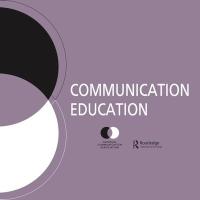
Higher education has been commodified as neoliberal ideology is reflected in and perpetuated through social discourses, such as memorable messages. These discourses socialize young adults to college and shape their understanding about the purpose of higher education. Through in-depth interviews with 20 first-year college students, Ashby-King and Anderson found that the memorable messages students received from their family, peers, and high school teachers reinforce the dominant neoliberal, job-centered understanding of college’s purpose. In turn, they suggest critical communication pedagogy as a form of resistance instructors and institutions can use to promote a more expansive view of higher education and teaching/learning.
Communicating stakeholder resilience: understanding how resilience discourse can build a fully functioning society
These findings illuminate the societal role of organizational discourse by showing how inclusive organizational-public communication can disrupt meta-narratives and enrich the marketplace of ideas.
Author/Lead: Lindsey AndersonNon-ARHU Contributor(s): Jiankun Sylvia Guo
Resilience is an ongoing sensemaking process that relies on communicative interactions – including those that occur between stakeholders and organizations – in order to understand and respond to a given adversity. Resilience communication is enacted through discursive processes that align with the tenets of fully functioning society theory (FFS). In order to integrate these two theoretical frameworks, we completed a qualitative content analysis of AARP’s #DisruptAging campaign. In doing so, we found that the campaign provided information about age/aging in a way that countered commonly held stereotypes about older adults at multiple-levels (e.g., individual, organizational, societal). The processes of resilience were reflected in the organizational discourse, as was a new strategy – acceptance/appreciation. These findings illuminate the societal role of organizational discourse by showing how inclusive organizational-public communication can disrupt meta-narratives and enrich the marketplace of ideas, and thus contribute to the building of a fully functioning society through (re)constructing the meanings of resilience on individual, organizational, and societal levels.
An Organizational Socialization Perspective on Young Adults’ Ideas About Retirement: Examining Sources of Retirement Information, Meanings of Retirement, and Source-Meaning Associations
This study drew from literature on organizational socialization, namely an early phase called vocational anticipatory socialization (VAS), to examine the sources of information from which young adults learn about retirement, the meanings they ascribe to r
Author/Lead: Lindsey AndersonNon-ARHU Contributor(s): Patricia Gettings
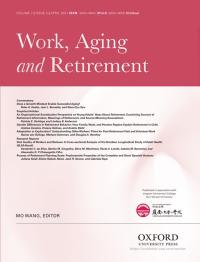
This study drew from literature on organizational socialization, namely an early phase called vocational anticipatory socialization (VAS), to examine the sources of information from which young adults learn about retirement, the meanings they ascribe to retirement, and associations between sources of retirement information and meanings. In study 1, quantitative content analysis was used to code 671 responses from young adults. In study 2, semi-structured interviews with 16 young adults were conducted and abductively analyzed. Results revealed 16 sources of information about retirement with grandparents and parents emerging as primary sources, and 13 meanings of retirement (e.g., freedom from work, financial issues, how time is spent, life phase, physical decline) that can be combined to construct negative or positive framings. In addition, chi-square analyses indicated significant associations between some source-meaning combinations in study 1, whereas study 2 revealed the nature of explicit and implicit advice from family members. Theoretical and practical implications are discussed.
Where Do You Turn? Student-Identified Resources in the Basic Course Experience, Sources of Information, Feedback, and Help-Seeking Behaviors
This study explored the formal and informal resources students enrolled in a basic communication course use to gather information and receive feedback about their course experience, including presentations and work in the class.
Author/Lead: Lindsey AndersonNon-ARHU Contributor(s): Ashley Jones-Bodie & Jennifer Hall

This study explored the formal and informal resources students enrolled in a basic communication course use to gather information and receive feedback about their course experience, including presentations and work in the class. To do so, an online survey was completed by 393 students at three universities. The data were analyzed thematically using an iterative process facilitated through NVivo coding software. This process not only allowed for a descriptive summary of the students’ responses and the creation of a typology of resources, but also revealed four emergent themes related to student motivations to seek out and use sources of information/feedback: (1) the level of availability (2) the value of personalized feedback, (3) the perceived authority, and (4) need for of examples. Taken together, these findings inform practical implications about information literacy, availability of vetted examples, and family/friend involvement, all of which are important for basic course administrators and instructors to consider in order to support student success and learning in the basic communication course classroom.
Measuring Essential Learning Outcomes for Public Speaking
This manuscript compiles dozens of measurement resources, aligned by outcome, and also identifies areas where future assessment measures development is needed.
Author/Lead: Lindsey AndersonNon-ARHU Contributor(s): Melissa A. Broeckelman-Post, Karla M. Hunter, Joshua N. Westwick, Angela Hosek, Kristina Ruiz-Mesa, & John Hooker

Basic Course Directors (BCDs) are typically expected to assess course learning outcomes, but few formal guidelines and resources exist for new BCDs. As one part of a larger multi-methodological assessment tool development project, this manuscript maps existing quantitative measures onto the six essential competencies and associated learning outcomes established by the Social Science Research Council Panel on Public Speaking. This manuscript compiles dozens of measurement resources, aligned by outcome, and also identifies areas where future assessment measures development is needed. While there are many measures available for evaluating outcomes related to creating messages, critically analyzing messages, and demonstrating self-efficacy, there are measurement gaps for outcomes related to communication ethics, embracing difference, and influencing public discourse.
Read More about Measuring Essential Learning Outcomes for Public Speaking
Exploring the role of communication in the aging in place experience: A quasi-ethnographic account of a local community
A quasi-ethnographic study of a local neighborhood completed using communication infrastructure theory (CIT).
Author/Lead: Lindsey Anderson
Aging in place (AIP), or older adults' ability to remain in their homes and communities as they age, is an important social issue given the growing aging population. Communication is a central component of this process, yet little is known about how communicative resources are used by residents to co-construct community as they age. In order to address this topic, a quasi-ethnographic study of a local neighborhood was completed using communication infrastructure theory (CIT). Three themes emerged from the data: (1) shifting communication infrastructure, (2) shifting identities, and (3) shifting priorities of the community and its members. These findings inform theoretical and practical implications related to the built environment and organizational-resident communication that facilitates the AIP experience.


